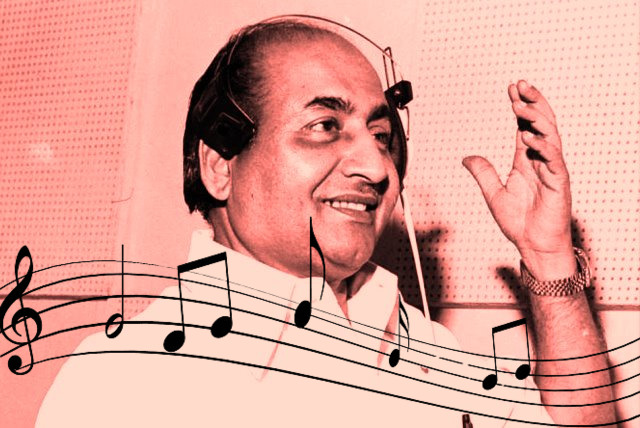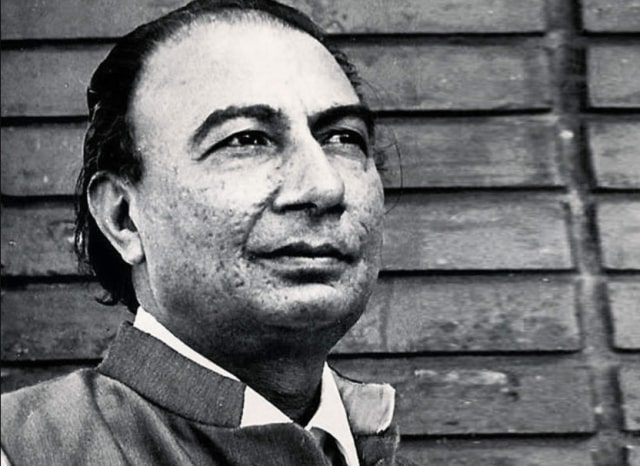If artificial intelligence (AI) can resurrect the voice of the dead, one voice that India deserves is that of Mohammed Rafi. Arguably though, but besides its mellifluousness, it carries a message that is direly needed today. Generations have heard this voice saying: Awaaz do hum ek hain and also Tu Hindu banega na Musalmaan banega, Insaan ki aulad hai, insaan banega.”
Prime Minister Narendra Modi did well to remember Raj Kapoor, Rafi, Akkineni Nageswara Rao (ANR), and Tapan Sinha—all centenarians in 2024. All were voices of an independent India emerging from colonial rule, collectively and individually, who used cinema to convey these very messages.
Of them, Rafi was only a crooner who sang lines written and composed, even lip-synced on the screen by others. Yet, his voice, even as it continues to enthral 45 years after it went silent, and its legacy carries a universal message. Take his song of the 1960s sung in English: Although we hail from different lands, We share one earth and sky and sun, Remember friends the world is one.
When his first wife, whose parents were victims of the Partition holocaust, migrated to Pakistan, Rafi, unlike Noorjehan, Khurshed, GM Durrani and others, chose to remain and work in India and remarried. He was to sing, Mat poochh mera hai kaun vatan aur main kahaan ka hoon, Saara jahaan hai mera, main saarey jahaan ka hoon. (Mr India-1961).
My only ‘live’ listening to him, as a child in the 1950s, was during the Durga Puja festivities. Only later as a grown-up I learnt that his rendering of Man tarapat Hari darshan ko aaj and O duniya ke rakhwale (Baiju Bawra-1952) was amidst a debate wherein the Hindustani Classical exponents of the day were reluctant to acknowledge this prowess of a ‘filmy’ singer.
There was another side to the debate. These songs in obeisance of the Hindu deities were written by Shakeel Badayuni, composed by Naushad Ali and sung by Rafi, all Muslims. That inclusive ethos, by and large, remains Indian cinema’s hallmark.
All of Rafi’s contemporaries and competitors were versatile. But he was, arguably again, the foremost. From a frustrated prince to a boisterous tongawala, he sang romantic songs, bhajans, qawwalis, comic numbers, ghazals, semi-classical compositions, laments, a drunk hero, of separation, heartbreaks, renunciation and patriotic anthems with comparable gusto and dexterity. One doubts if such a range of emotions is evident in present-day writing and singing.
After Mukesh’s hits in Andaz (1949), he became Dilip Kumar’s almost ‘permanent’ voice. Of the 145 songs he sang under Naushad’s baton, 81 of them solo, many were lip-synced by Kumar. He crooned for Raj Kapoor in early films before Mukesh took over. He took over from Manna Dey, Talat Mahmood and Mukesh to sing for Dev Anand with Kishore Kumar, till the latter raced ahead. In the 1965 classic Guide, where Kishore sang the iconic Gaata rahe mera dil“, Rafi’s Tere mere sapne, Din dhal jaye and Kya se kya ho gaya held its ground firmly. His Teen Deviyan songs for Anand are a personal favourite even today.
Among his competitors, Manna De was famous for folk and classical songs, Mukesh for the melancholic ones, Kishore for the comic and the boisterous, and Talat Mahmood for soft ghazals, but Rafi sang all these types and more.
Yet, he was fallible before the market forces. Kishore Kumar emerged as the winner after the release of Aradhana (1969). Taking in the broader picture, this marked the advent of Rajesh Khanna and Amitabh Bachchan and the beginning of the Rafi-constant Dilip Kumar’s gradual fade-out. Rafi scaled back the heights though after a long hiatus.
ALSO READ: Mukesh – A Tragic Voice That Tickled
His forte lay in imagining how the actor would ‘sing’ his song. This helped him pack pathos for Dilip Kumar, Guru Dutt or Rajendra Kumar, give a romantic lilt to Dharmendra or Manoj Kumar songs and a raunchy-high pitch ‘Yahoo’ for Shammi Kapoor. He reflected the anguish of Balraj Sahni, a father receiving his dead son’s body (Aman-1967).
His was a paradox of private calm and public celebrity status. The perennially composed Rafi would turn naughty on the stage. Bikini-clad girls paraded as he belted Badan pe sitare lapetey huwe (Prince-1969).
He was immensely popular. On a tour of the Caribbean, when he was about to leave after finishing his assignment, his admirers surrounded the aircraft he was about to board and forced him to stay back and sing to them.
Javed Akhtar recounts his ease and confidence while singing. Greeted by visitors through the recording room window, in between two antaraas (stanzas), he moved away to sip water, greeted them with a smile and an aadaab, returned to the microphone and resumed singing.
He was modest to a fault. When fans thrust autograph books at him in his early years, he would ask an accomplice, “What do they want?”
Between 1945 when he began at 17, and 1980, the year he passed away, he recorded songs for over a thousand Hindi films and in a dozen Indian languages and dialects, though primarily in Urdu and Punjabi. Besides, he sang in Persian, Creole, Arabic, Sinhala and Dutch.
The number of songs he rendered is a matter of contention. A biographer puts it at 4,500. Other records say 7,000. To the Guinness Book of Records, he claimed it was more than Lata Mangeshkar. The global record-keeper has credited her with singing “at least 25,000” songs. Rafi was unhappy when it refused to consider his claim and said so to the BBC during an interview.
A motivated and ill-informed criticism of his getting only a Padmashri, when Lata got Bharat Ratna in 2001, has lingered. The timeline says Rafi died at 55, with his career snapped in 1980, while Lata performed for over six decades, till 2009.
Since the two dominated Bollywood’s playback singing scene for many years, a clash was inevitable. Perhaps, Lata was more business-savvy and wanted the producers to pay more royalty. Rafi, happy receiving the money he contracted, did not support her. He argued that the producer/ investor who fulfilled the royalty condition also ran high financial risk. The two did not sing together for a period and the industry suffered the clash of giants, till Jaikishan of the Shankar-Jaikishan duo worked out a compromise.
Rafi received six Filmfare Awards and one National Film Award, besides being adjudged “Singer of the Millennium” and numerous other honours. But they do not fully cover his prowess and contribution.
To end with the hope of the return of his AI-generated voice, the appropriate song, perhaps, would be the Samjhauta (1973) song: Badi dur sey aye hain, Pyar ka tohfa laaye hain.

